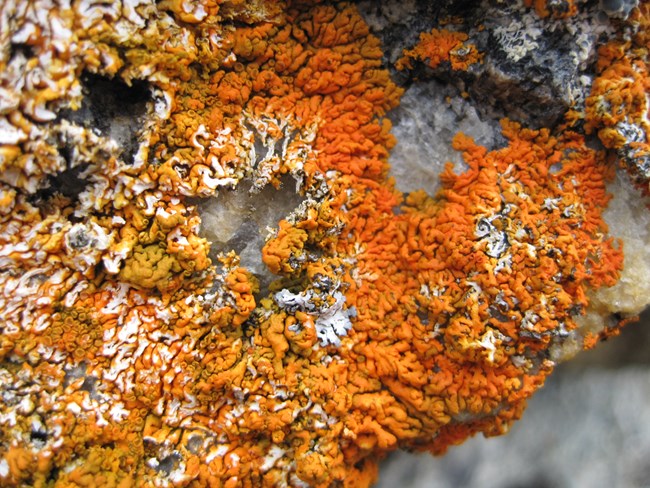
NPS Photo Lichens (Inupiaq: niqizruaq) are fascinating organisms that come in a multitude of colors and shapes. They may looks like plants, but they're actually different from any plant, animal, or fungus. Lichens are very important components of subarctic and arctic ecosystems due to their role in weathering rock and minerals, and their contribution of nitrogen and other nutrients to the soil. Lichens are often the very first life forms to colonize freshly exposed rock surfaces high in the mountains, and they immediately begin the very slow process of weathering minerals from the barren rock and incorporating them into their bodies. When lichens subsequently decompose, these nutrients become available to other forms of plant life, literally breaking down rock into its component minerals that are then available for nutrition. There are three main growth forms of lichen:
Lichens can be useful for creating dyes, indicating air and substrate quality, and providing a food source for reindeer and caribou on the Seward Peninsula. Check out some of the most common lichen genera you'll find around Bering Land Bridge! 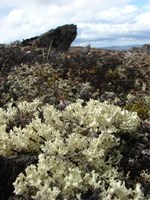
NPS Photo / Jason Gablaski CetrariaCetraria are small-to-large foliose lichens with narrow or channeled lobes. Often yellow, brownish, or blackish, they are extremely common on the tundra and an important element in reindeer and caribou diets. 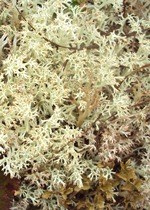
NPS Photo / Matt Jenkins CladinaMore commonly known as reindeer lichens, Cladina species vary widely and cover a wide range of land and habitats. These fruticose lichens are typically shrubby and vary in color between white, green, and yellow. As the common name suggests, reindeer lichens are an important food source for local caribou and reindeer populations. They are abundant throughout the tundra. 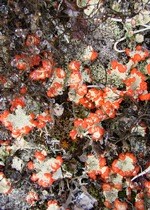
NPS Photo CladoniaNot to be confused with Cladina, Cladonia lichens are fruticose, stalk-like, and usually best identified by their cap of red fruit or their cup-like structure. Be aware though, these can be tricky -- all lichens with these characteristics fall under the Cladonia genus, but not all Cladonia have red fruit caps or that cup structure! 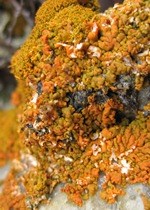
NPS Photo XanthoriaLichens in the genus Xanthoria are easily recognized by their bright orange or yellow coloration. These are usually seen growing on rock faces around the Seward Peninsula, often where birds of prey hang out. Xanthoria love nitrogen-rich environments - and incidentally, bird feces contain high levels of nitrogen, so it can be used as an indicator of where you might find a raptor roost or nesting area. 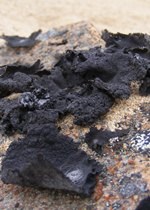
NPS Photo UmbilicariaThis medium-to-large black foliose lichen is commonly found on rock surfaces throughout the tundra. It can be identified by having a single point of attachment to the rock (like an umbilical cord), a dark upper side, and pale underside. |
Last updated: December 16, 2025
